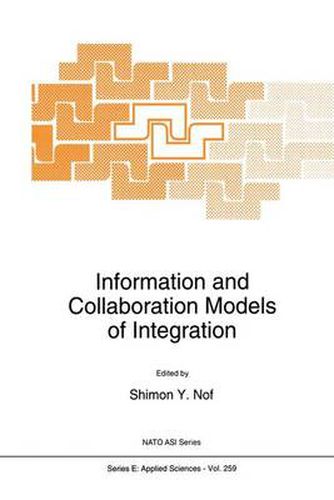Readings Newsletter
Become a Readings Member to make your shopping experience even easier.
Sign in or sign up for free!
You’re not far away from qualifying for FREE standard shipping within Australia
You’ve qualified for FREE standard shipping within Australia
The cart is loading…






This title is printed to order. This book may have been self-published. If so, we cannot guarantee the quality of the content. In the main most books will have gone through the editing process however some may not. We therefore suggest that you be aware of this before ordering this book. If in doubt check either the author or publisher’s details as we are unable to accept any returns unless they are faulty. Please contact us if you have any questions.
The objective of this book is to bring together contributions by eminent researchers from industry and academia who specialize in the currently separate study and application of the key aspects of integration. The state of knowledge on integration and collaboration models and methods is reviewed, followed by an agenda for needed research that has been generated by the participants. The book is the result of a NATO Advanced Research Workshop on Integration: Information and Collaboration Models that took place at II Ciocco, Italy, during June 1993. Significant developments and research projects have been occurring internationally in a major effort to integrate increasingly complex systems. On one hand, advancements in computer technology and computing theories provide better, more timely, information. On of users and clients, and the the other hand, the geographic and organizational distribution proliferation of computers and communication, lead to an explosion of information and to the demand for integration. Two important examples of interest are computer integrated manufacturing and enterprises (CIM/E) and concurrent engineering (CE). CIM/E is the collection of computer technologies such as CNC, CAD, CAM. robotics and computer integrated engineering that integrate all the enterprise activities for competitiveness and timely response to changes. Concurrent engineering is the complete life-cycle approach to engineering of products. systems. and processes including customer requirements, design. planning. costing. service and recycling. In CIM/E and in CE, computer based information is the key to integration.
$9.00 standard shipping within Australia
FREE standard shipping within Australia for orders over $100.00
Express & International shipping calculated at checkout
This title is printed to order. This book may have been self-published. If so, we cannot guarantee the quality of the content. In the main most books will have gone through the editing process however some may not. We therefore suggest that you be aware of this before ordering this book. If in doubt check either the author or publisher’s details as we are unable to accept any returns unless they are faulty. Please contact us if you have any questions.
The objective of this book is to bring together contributions by eminent researchers from industry and academia who specialize in the currently separate study and application of the key aspects of integration. The state of knowledge on integration and collaboration models and methods is reviewed, followed by an agenda for needed research that has been generated by the participants. The book is the result of a NATO Advanced Research Workshop on Integration: Information and Collaboration Models that took place at II Ciocco, Italy, during June 1993. Significant developments and research projects have been occurring internationally in a major effort to integrate increasingly complex systems. On one hand, advancements in computer technology and computing theories provide better, more timely, information. On of users and clients, and the the other hand, the geographic and organizational distribution proliferation of computers and communication, lead to an explosion of information and to the demand for integration. Two important examples of interest are computer integrated manufacturing and enterprises (CIM/E) and concurrent engineering (CE). CIM/E is the collection of computer technologies such as CNC, CAD, CAM. robotics and computer integrated engineering that integrate all the enterprise activities for competitiveness and timely response to changes. Concurrent engineering is the complete life-cycle approach to engineering of products. systems. and processes including customer requirements, design. planning. costing. service and recycling. In CIM/E and in CE, computer based information is the key to integration.